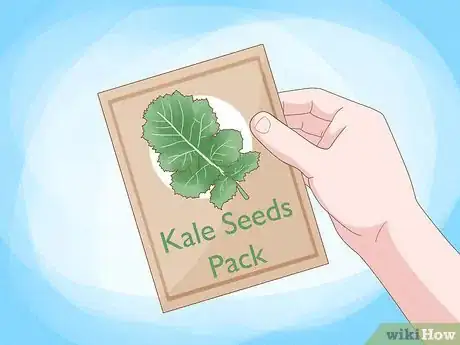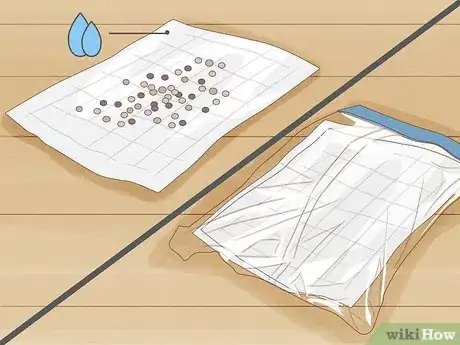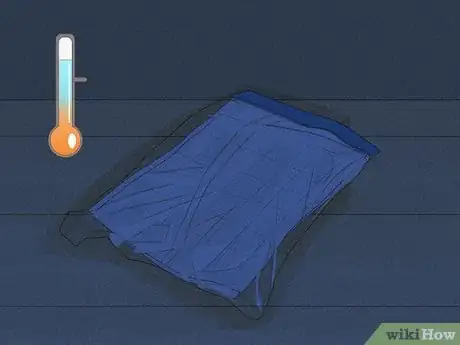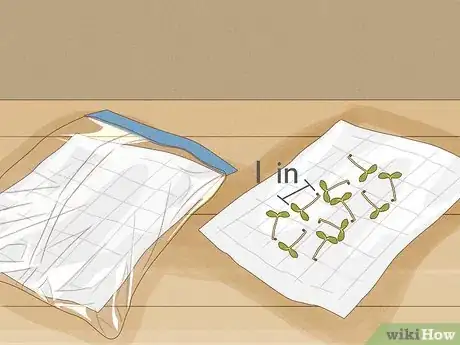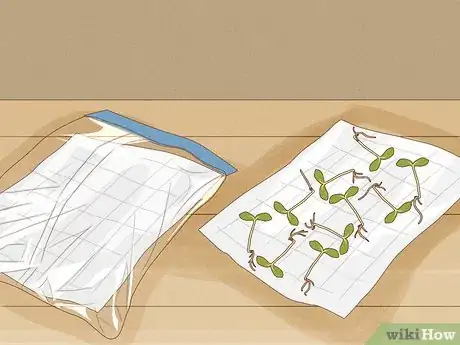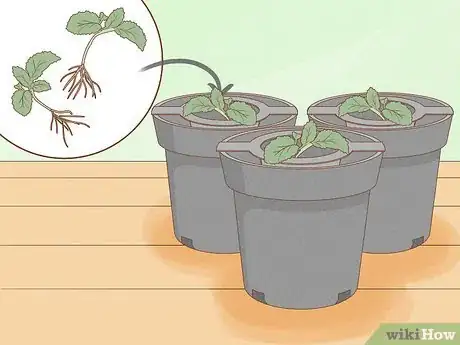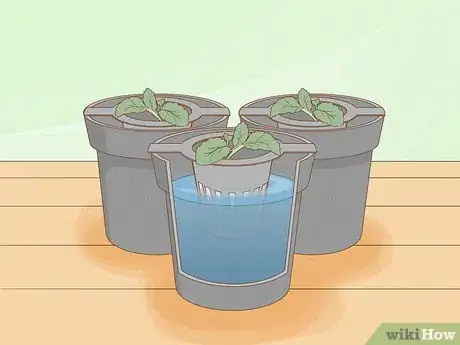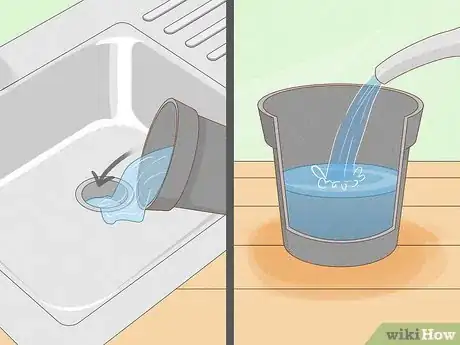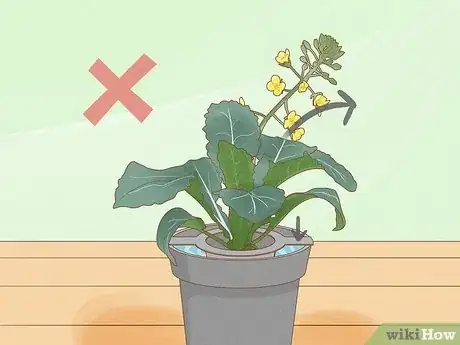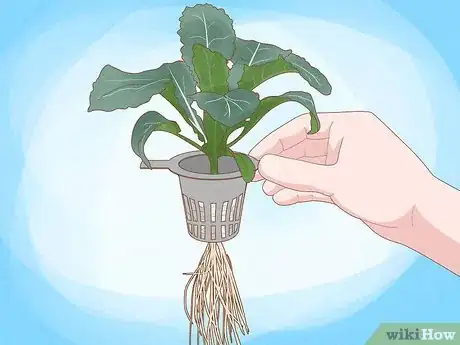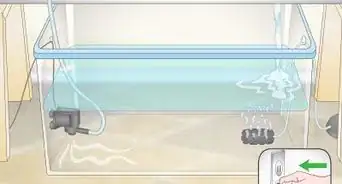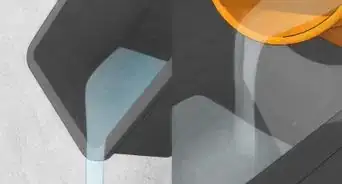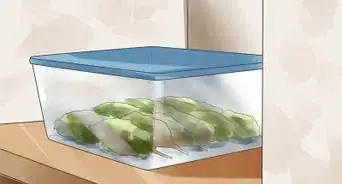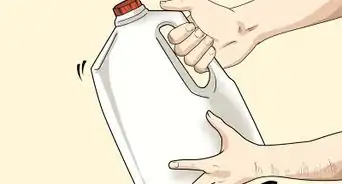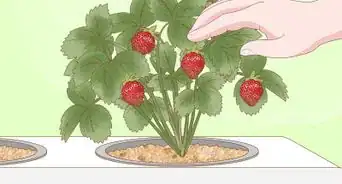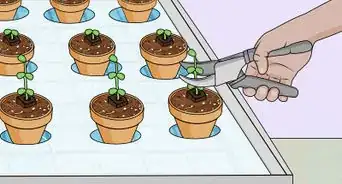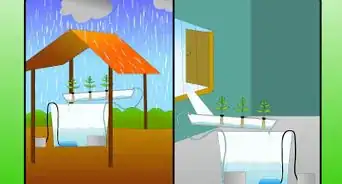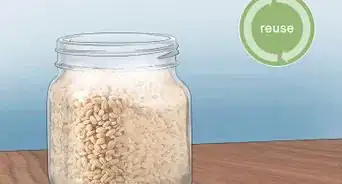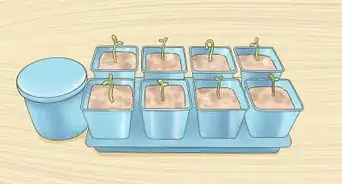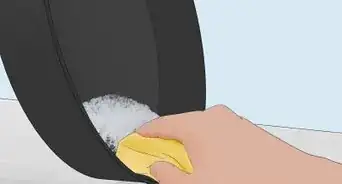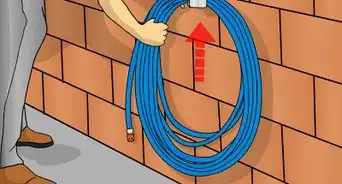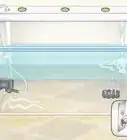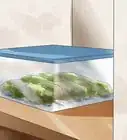This article was co-authored by Ryan Glynn, CPA. Ryan Glynn is a Plant Specialist, Interiorscaper, and the Founder of Chicago Plants, LLC. He specializes in houseplant care, interior plant-scaping, and gardening. Ryan and Chicago Plants have been featured in several media outlets such as TimeOut Magazine and the Chicago Tribune. Ryan holds a BBA and Master’s degree in Accounting from The University of Wisconsin-Madison.
There are 7 references cited in this article, which can be found at the bottom of the page.
wikiHow marks an article as reader-approved once it receives enough positive feedback. In this case, 100% of readers who voted found the article helpful, earning it our reader-approved status.
This article has been viewed 98,625 times.
Gardening is a great way to grow your own decor or even some tasty dinner additions, but not everyone has a green thumb. Hydroponic gardens, or gardens that don't use water and ditch the soil, are great for people with a limited budget and not too much space. We'll show you how to sprout seedlings, transfer them to a hydroponic container, and keep them happy and healthy until harvest.
Things You Should Know
- Place your seeds in a plastic bag with a damp paper towel until they sprout.
- Transfer the seedlings into hydroponic containers filled with water.
- Change the water in the pot every few days, and watch for buds growing near the leaves.
Steps
Germinating Seeds
-
1
-
2Take wet paper towels and place the seed(s) inside them. Fold it over, and place it gently in a clear, sealable bag.Advertisement
-
3Put the bag in a warm, dark place and give the seeds some time to germinate. Germination is triggered when a seed is wet, so keep the paper towels moist. Don't forget that some seeds take longer than others.[3]
-
4Keep in mind that, when the seeds have germinated and is showing at least one inch of stem, it is a seedling. What you do next depends on the type of plant.
- If the seed has a frailer stem, keep it in the original paper towel but cut small holes for the leaves to emerge through.
- If the seed has a stronger stem, feel free to cover only the roots in wet paper towels and let the stem straighten out and grow leaves.
-
5Watch the seedling(s) carefully so that they grow straight. This is a very fragile time in their life, so be extremely gentle.
Potting Your Seedlings
-
1Move your plant into its permanent container when the seedling is stronger and bigger.[4]
-
2Fill the container with water. You can choose between having one plant per container, or doing a larger container with many plants. If you choose the second option, make sure that all the plants have good support.
-
3Place your grown seedling into the water, so that only the roots are submerged. If you are growing a plant that gets much taller, you should probably tape a support to the side of the container.
-
4
Maturing Your Plants
-
1If you chose a plant that bears fruit, watch for flower buds growing near the leaves. They will open and dry up, leaving behind the start of a fruit or vegetable.
- If the plant needs cross-pollination in order to be fertilized, place the plant outside or near an open window for a few days so that insects can do the job. A good plant for hydroponic gardening is one that self pollinates.
-
2Make sure that the flowers don't weigh the stem down, if you chose a flowering plant. Normally, plants can anchor themselves into the dirt for extra support. Check your plant's stem daily for any cracks or bending points.
-
3Harvest the fruit/vegetables like any other plant. Enjoy your hydroponic garden![7]
Community Q&A
-
QuestionDo I still need dirt to grow plants?
 Community AnswerYou do not need dirt to grow plants, Gravel and many other substances can be used. The plants can rely only on the water and nutrients provided continuously.
Community AnswerYou do not need dirt to grow plants, Gravel and many other substances can be used. The plants can rely only on the water and nutrients provided continuously. -
QuestionWhat kind of seeds can be used to grow a plant in 15 days?
 Community AnswerTry lettuce or Thai Basil. They are pretty quick. Most herbs are fast growing, but ones with woody stems tend to take a lot longer.
Community AnswerTry lettuce or Thai Basil. They are pretty quick. Most herbs are fast growing, but ones with woody stems tend to take a lot longer. -
QuestionWhat temperature should the water be for lettuce plants?
 Community AnswerRoom temperature is fine. If the water is too warm, it can encourage algae growth.
Community AnswerRoom temperature is fine. If the water is too warm, it can encourage algae growth.
References
- ↑ https://www.greenandvibrant.com/seed-starting-hydroponics
- ↑ Ryan Glynn, CPA. Plant Specialist & Interiorscaper. Expert Interview. 4 November 2021.
- ↑ https://extension.psu.edu/seed-and-seedling-biology
- ↑ Ryan Glynn, CPA. Plant Specialist & Interiorscaper. Expert Interview. 4 November 2021.
- ↑ https://www.apartmenttherapy.com/hydroponic-gardening-how-to-easily-grow-plants-in-water-236892
- ↑ Ryan Glynn, CPA. Plant Specialist & Interiorscaper. Expert Interview. 4 November 2021.
- ↑ http://www.fao.org/3/y4358e/y4358e05.htm
- https://www.nps.gov/articles/hydroponics.htm
- https://www.popularmechanics.com/home/lawn-garden/how-to/a24404/how-to-grow-hydroponic-plants/
About This Article
If you want to grow plants using hydroponics, first place the seeds in a wet paper towel, fold it over, and put them in a clear, sealable bag. Next, put the bag in a warm dark place so the seeds can germinate. Then, after they’re germinated, transfer the plant to its permanent hydroponic container. Finally, fill the container with water, but make sure only the roots are submerged. Keep in mind that you can choose between having one plant per container or a larger container with many plants. For more guidance, including how to mature your plant, scroll down!
